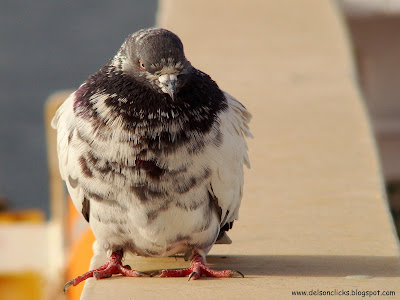
 The construction of the nest resumed today morning and was completed by evening. In the first photograph Mrs Cheeku is comfortably nesting in her villa.
The construction of the nest resumed today morning and was completed by evening. In the first photograph Mrs Cheeku is comfortably nesting in her villa.f/4.5 , + telephoto lens
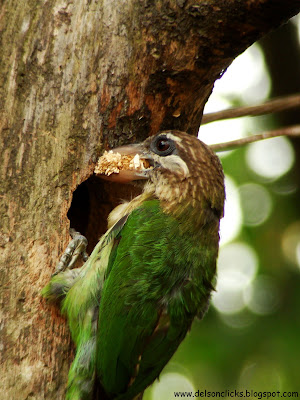 Cheeku continued the construction work of his Villa today. He has been joined by Mrs Cheeku and they have been taking turns in nest building. Each of them keep drilling for about half an hour, until they heavily pant, with one partner keeping a close eye on the partner, warning it of any predator.
Cheeku continued the construction work of his Villa today. He has been joined by Mrs Cheeku and they have been taking turns in nest building. Each of them keep drilling for about half an hour, until they heavily pant, with one partner keeping a close eye on the partner, warning it of any predator.
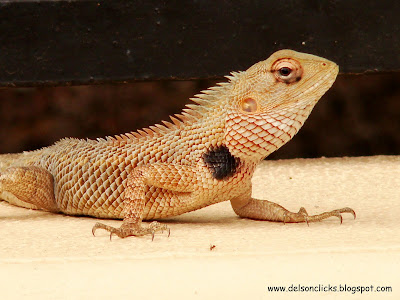

 In the 17th up to the 19th century the plumes of this bird were in great demand to make hats, and hunting had reduced this bird population to dangerously low levels. But Conservation laws helped protect this bird and its population has come back strongly.
In the 17th up to the 19th century the plumes of this bird were in great demand to make hats, and hunting had reduced this bird population to dangerously low levels. But Conservation laws helped protect this bird and its population has come back strongly. This is my 100th Post, on the "Friendly Animals" section of my blog. Though I started this genre later, over a period of time, it has overtaken all other Genres of Photography.
This is my 100th Post, on the "Friendly Animals" section of my blog. Though I started this genre later, over a period of time, it has overtaken all other Genres of Photography. Lotens Sunbird.
Lotens Sunbird. A female Purple Rumped Sunbird. I have posted photographs of sunbirds and some notes earlier on this blog. Posted these new photographs, since this time around the framing was better.
A female Purple Rumped Sunbird. I have posted photographs of sunbirds and some notes earlier on this blog. Posted these new photographs, since this time around the framing was better. Indian Pond Heron , Above
Indian Pond Heron , Above Common Green Shank
Common Green Shank Both the birds share a frame
Both the birds share a frame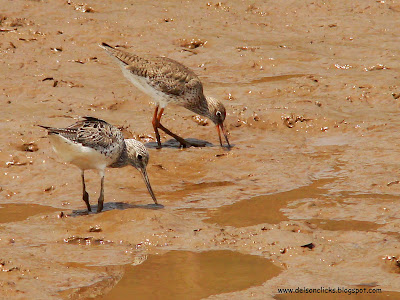 Common Redshank in the background and a Common Greenshank in the foreground. Probably were foraging for crabs or frogs. I for a moment though I would get down into the field and get some low angled photographs, but then finally decided to only lower my tripod into the silt and save my shoes for another day.
Common Redshank in the background and a Common Greenshank in the foreground. Probably were foraging for crabs or frogs. I for a moment though I would get down into the field and get some low angled photographs, but then finally decided to only lower my tripod into the silt and save my shoes for another day.

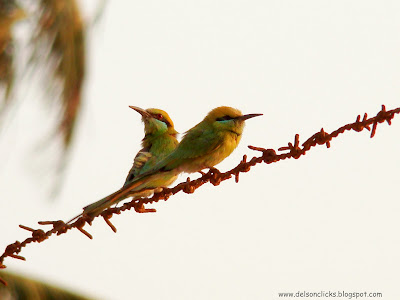

 It was noontime and the sun was creating strong shadows at the birds undercarriage, To bring out the details from the bird, I did spot metering of the birds dark plumage and hence this overexposed background. Though the bird has turned out clean, the overexposed background does not do justice to the birds beauty.
It was noontime and the sun was creating strong shadows at the birds undercarriage, To bring out the details from the bird, I did spot metering of the birds dark plumage and hence this overexposed background. Though the bird has turned out clean, the overexposed background does not do justice to the birds beauty. Also called the Crow-pheasant, when two Coucal's are in the "Mood"the two birds then synchronizes their calls and give a orchestra like performance that can lighten up any forest.
Also called the Crow-pheasant, when two Coucal's are in the "Mood"the two birds then synchronizes their calls and give a orchestra like performance that can lighten up any forest.
 This bird has a long and shallowly forked tail, with the shafts of the two outermost feathers greatly extended and ending in the rackets which give this species its name.You can notice the long tail of the bird, in addition to the tail, the bird is also got a dark crest. Like all other Drongo's this bird too is aggressive by nature, and when I spotted it for this photograph, it had just chased away a Jungle babbler.
This bird has a long and shallowly forked tail, with the shafts of the two outermost feathers greatly extended and ending in the rackets which give this species its name.You can notice the long tail of the bird, in addition to the tail, the bird is also got a dark crest. Like all other Drongo's this bird too is aggressive by nature, and when I spotted it for this photograph, it had just chased away a Jungle babbler.
 Jungle Babbler, photographed at Mangalore, in my grandpas farm. It is said that they are generally found in groups of seven and hence in India they are called "The Seven Sisters"
Jungle Babbler, photographed at Mangalore, in my grandpas farm. It is said that they are generally found in groups of seven and hence in India they are called "The Seven Sisters"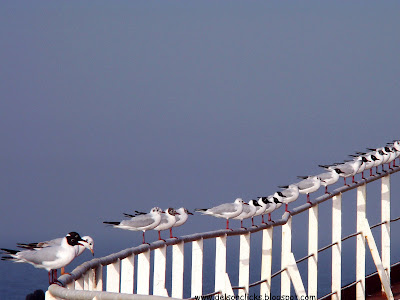
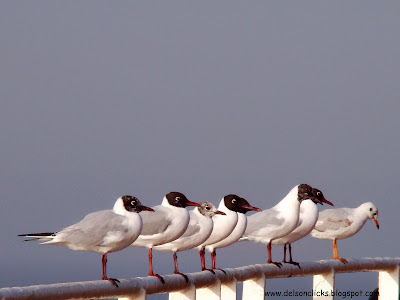

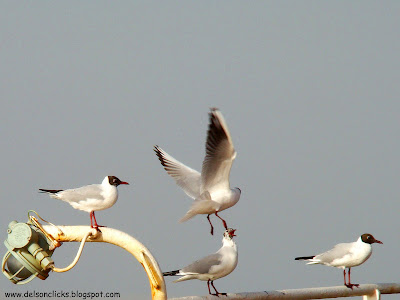
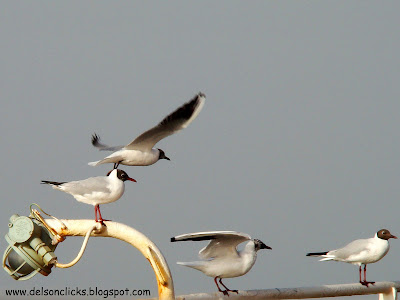


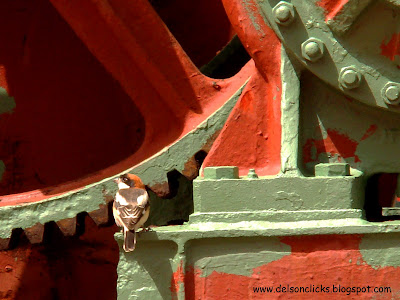
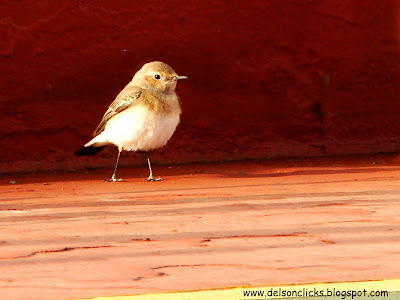 A Black eared Wheatear, landed on my ships deck, off the Iranian coast.The sun opposite to the bird can be seen reflected in its eye. The red deck of the ship reflecting on the bird gives it some nice warm tones, and it feels like nice twilight light. In fact it was about 3 in the evening and the sun was at it scorching best.
A Black eared Wheatear, landed on my ships deck, off the Iranian coast.The sun opposite to the bird can be seen reflected in its eye. The red deck of the ship reflecting on the bird gives it some nice warm tones, and it feels like nice twilight light. In fact it was about 3 in the evening and the sun was at it scorching best. On land this Isabelline Wheatear , feeds on insects on ground. Now I wonder what did it find on the deck of my ship? other than rust flakes. I followed the bird the entire time and he kept hopping from place to place, pausing with a very upright posture to give me a glance and continue foraging.
On land this Isabelline Wheatear , feeds on insects on ground. Now I wonder what did it find on the deck of my ship? other than rust flakes. I followed the bird the entire time and he kept hopping from place to place, pausing with a very upright posture to give me a glance and continue foraging.


